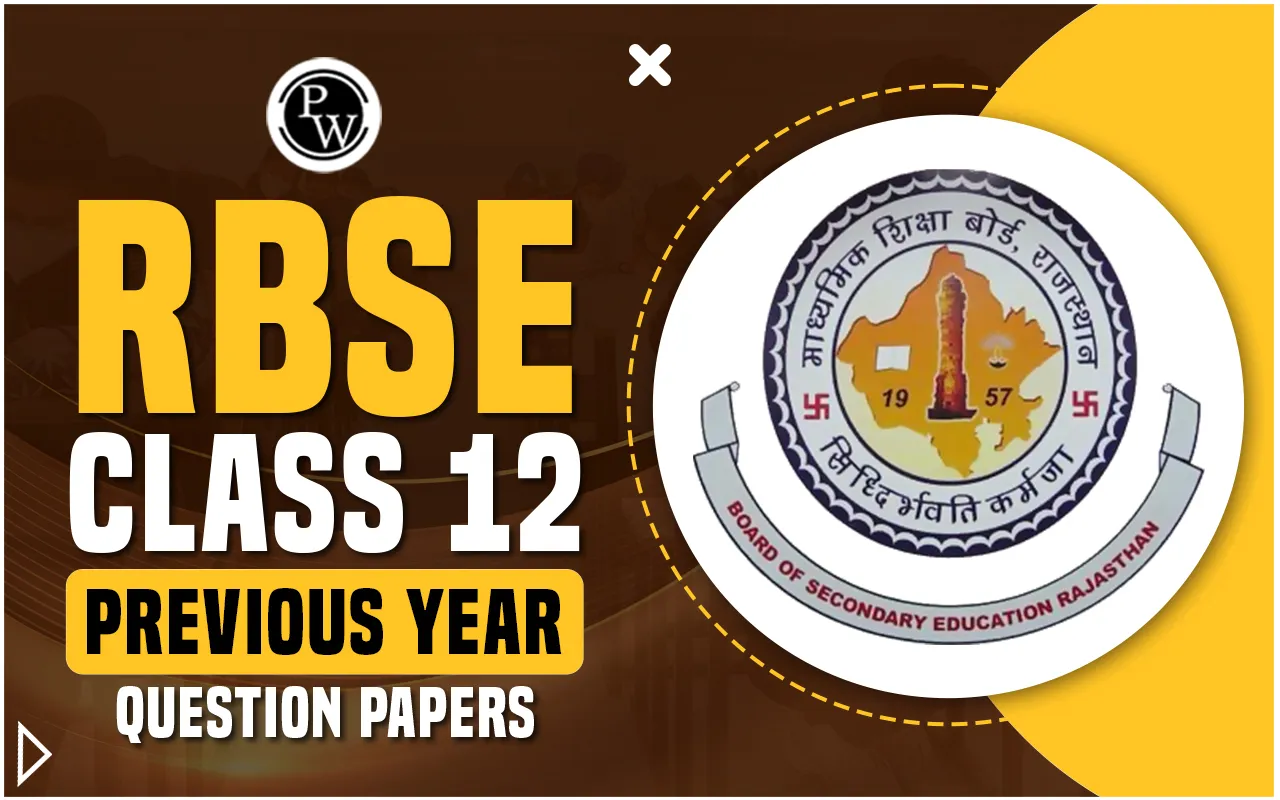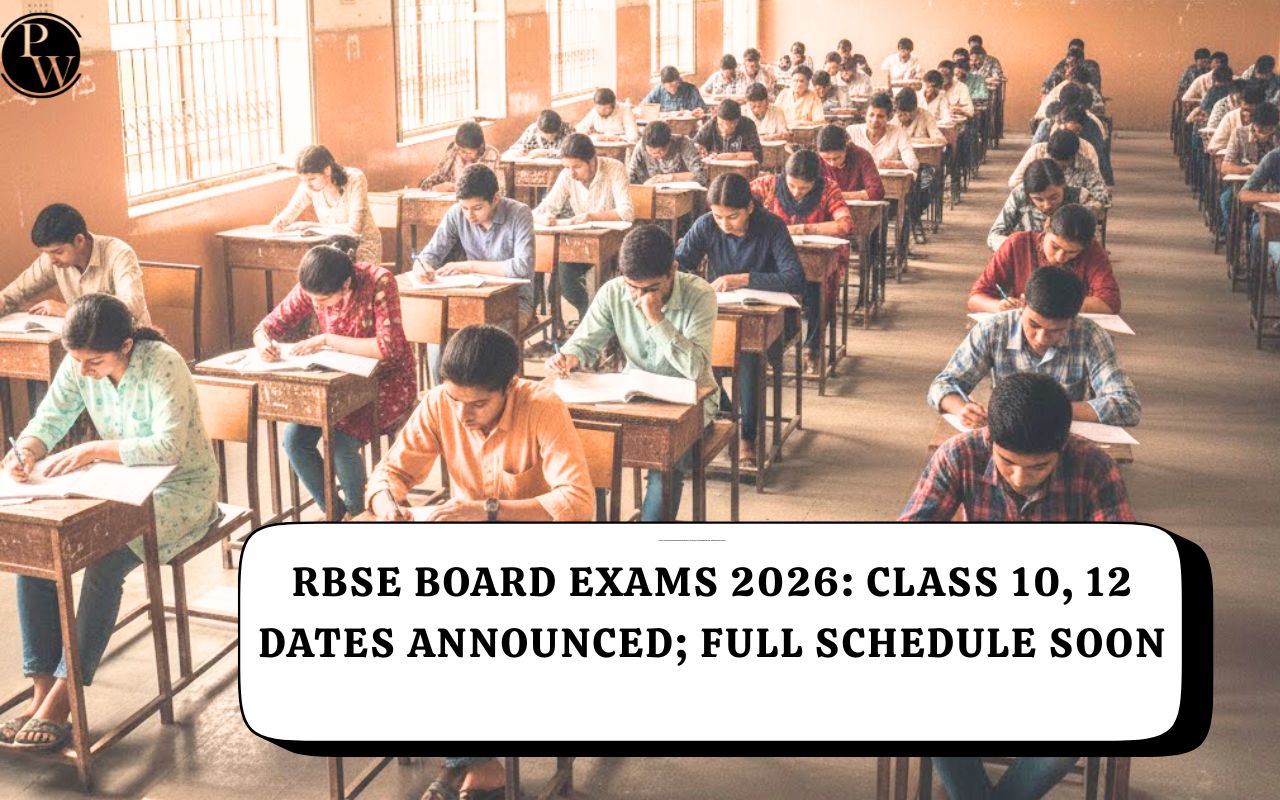
RBSE Class 9 Science Syllabus for the 2025-26 academic session has been released. It includes a list of units and chapters, along with how marks are distributed. The syllabus is available in both English and Hindi, making it easier for students to study in their preferred language.
Science syllabus covers the syllabus for all the three subjects, i.e., Biology, Chemistry, and Physics. The syllabus also gives details about the exam pattern and marking scheme, which will help students plan their studies and aim for the best possible marks.
RBSE Class 9 Science Syllabus 2025-26
RBSE Class 9 Science syllabus 2025-26 includes three main subjects: Physics, Chemistry, and Biology. Key topics in Physics include Motions, and Force and Laws of Motion Force. Chemistry covers Purity of Matter Around us and Matter in our Surroundings. Biology focuses on Life Processes, and The fundamental unit of life.
The syllabus also emphasizes practical skills, with a focus on conducting experiments and understanding scientific concepts through observation and application in real-life scenarios.
RBSE Class 9 Science Syllabus 2025-26 Download PDF
RBSE Class 9 Science Syllabus 2025-26 has been released by the Rajasthan Board of Secondary Education (RBSE) for the upcoming academic session. This syllabus is a roadmap for students preparing for the Science exam, covering Physics, Chemistry, and Biology along with practical assessments.
With clear chapter-wise weightage, exam pattern, and marking scheme, students can plan their studies strategically and score well in exams. For the convenience of students, the syllabus is available in PDF format, which can be downloaded here:
RBSE Class 9 Science Syllabus 2025-26 Download PDF
Study without using the internet
Steps to Download RBSE Class 9 Science Syllabus 2025-26
To download the RBSE Class 9 syllabus 2025-26, follow these steps:
-
Visit the Official RBSE Website: Go to the Rajasthan Board of Secondary Education's official website (http://rajeduboard.rajasthan.gov.in/).
-
Navigate to the Syllabus Section: On the homepage, look for the “Syllabus” section.
-
Select Class 9: Find and click on the link for Class 9 syllabus.
-
Download the PDF: The syllabus will open in PDF format. Download and save it for future reference.
RBSE Class 9 Science Exam Pattern 2025
RBSE Class 9 Science Exam 2025 follows a comprehensive pattern that assesses students' understanding of various scientific concepts. The exam consists of three sections: Physics, Chemistry, and Biology.
It includes both theory and practical components. The theory paper carries 80 marks, divided into multiple-choice questions (MCQs), short answer questions, and long answer questions. The practical exam holds 20 marks, evaluating students' hands-on skills in experiments.
The exam duration is typically 3 hours, and the syllabus follows the RBSE curriculum. The grading system is based on marks obtained, with students required to secure a minimum passing percentage.
RBSE Class 9 Science Marking Scheme 2025-26
RBSE Class 9 Science exam has a unit-wise and chapter-wise weightage that emphasizes key concepts. Physics holds significant weight, with chapters like Motion and Sound contributing more. Chemistry focuses on topics like Atoms and Molecules, while Biology covers chapters on Tissues and the Fundamental Unit of Life.
Each unit is weighted to assess understanding across diverse scientific domains, ensuring balanced coverage of all subjects in the exam. Students must use RBSE Class 9 Science Model Paper 2025 to prepare for the academic exams. Below is the marking scheme included in the syllabus:
|
RBSE Class 9 Science Marking Scheme 2025-26 |
||
|
Unit |
Chapter Name |
Marks |
|
1. Matter in our Surroundings |
Physical nature of matter:- Matter is made up of particles, Size of particles of matter, Characteristic of particles of matter- Space between particles, Mobility of particles, Attraction between particles, States of matter- Solid state, Liquid state, Gaseous state, Change in state of matter and factors - Change in temperature, Change in pressure, Evaporation- factors influencing evaporation, Cooling due to evaporation. |
07 |
|
2. Purity of Matter Around us |
Mixture - Definition, Types of mixture, Solution - Concentration, Suspension, Colloidal Solution, Physical and Chemical Changes, Types of pure substances-elements, Compounds, Difference between mixture and compound. |
06 |
|
3. Atoms and Molecules |
Laws of Chemical Combination - Law of conservation of mass, Law of constant proportions, Atoms - Modern symbols of Atoms of elements, Atomic mass, Existence of Atom, Molecules - Molecules of elements, Molecules of compounds, Ions, Writing of chemical formulae - Formulae of simple compounds, Molecular mass - formula unit mass. |
09 |
|
4. Structure of the Atom |
Charged particles in matter, Structure of an Atom - Thomson's model of an Atom, Rutherford's modelof an Atom, Bohr's model of an Atom, Neutron, Distribution of electrons in different orbits (shells), Valency, Atomic number and mass number, Isotopes – isobars |
08 |
|
5. The fundamental unit of life |
Structure of living organisms, Structural organisation of cell-plasma membrane or cell membrane, Cell wall, Nucleus, Cytoplasm, Cell organelles, Endoplasmic reticulum, Golgi apparatus, Lysosomes, Mitochondria, Plastids, Vacuoles, Cell division. |
12 |
|
6. Tissues |
Tissues in plants and animal, Plant Tissues – Meristematic Tissue, Permanent Tissue, Simple Permanent Tissue, Complex Permanent Tissue, Animal Tissues - Epithelial Tissue, Connective Tissue, Muscular Tissue, Nervous Tissue. |
14 |
|
7. Motions |
Describing Motion- Straight line Motion, Uniform Motion and non-uniform Motion, Measuring the rate of Motion- Speed with direction, Rate of change of velocity, Graphical representation of MotionDistance-time graph, Equations of Motion, Velocity-time graph, Uniform circular Motion. |
09 |
|
8. Force and Laws of Motion |
Balanced and Unbalanced forces, First Law of Motion, Inertia and Mass, Second Law of MotionMathematical Formulation of second Law of Motion, Third Law of Motion. |
07 |
|
9. Gravitation |
Gravitation - Universal Law of gravitation, Importance of universal Law of gravitation, Free fall – To calculate the value of g, Motion of objects under the influence of gravitational force of the earth, Mass, Weight - Weight of an object on the moon, Thrust and pressure - Pressure in fluids, Buoyancy, Floating or sinking of objects on the surface of water, Archimedes principle. |
06 |
|
10. Work and Energy |
Not much ‘ Work’ in Spite of working hard, Scientific concept of work, Work done by a Constant force, Energy – Forms of energy, Kinetic energy, Potential energy, Potential energy of an object at a height, Interchangeable forms of energy, Law of conservation of energy, Rate of doing work. |
06 |
|
11. Sound |
Production of sound, Propagation of sound - Sound waves are longitudinal waves, Characteristics of Sound waves, Speed of sound in different mediums, Reflection of sound - Echo, Reverberation, Uses of multiple reflection of sound, Range of hearing, Applications of ultrasound. |
08 |
|
12. Improvement in Food Resources |
Improvement in Crop Yields - Crop Variety Improvement, Crop Production Management, Nutrient Management, Irrigation, Crop Pattern, Crop Protection Management, Animal Husbandry - Cattle Farming, Poultry Farming, Fish Production, Marine Fisheries, Inland Fisheries, Bee Keeping. |
08 |
|
Total |
100 |
|
Benefits of Knowing the RBSE Class 9 Science Syllabus 2025-26
Knowing the RBSE Class 9 Science syllabus 2025-26 offers several benefits:
-
Clear Understanding of Topics: It helps students understand which topics to focus on, ensuring efficient study planning.
-
Time Management: By knowing the syllabus, students can allocate time effectively to each unit based on its weightage and importance.
-
Better Exam Preparation: It helps in prioritizing important chapters and concepts that are likely to appear in exams.
-
Guided Learning: The syllabus serves as a roadmap for systematic learning, reducing confusion and providing a clear structure for study.
-
Confidence Boost: Familiarity with the syllabus reduces exam anxiety and helps students stay focused on key areas.
RBSE Class 9 Science Syllabus 2025-26 FAQs
What subjects are included in the RBSE Class 9 Science syllabus 2025-26?
How many chapters are in Science Class 9 in 2025-26?
Is the NCERT syllabus going to change in 2025 for Class 9?
What is the syllabus of Class 9th in Science?
What is the grading system of RBSE 2025?










